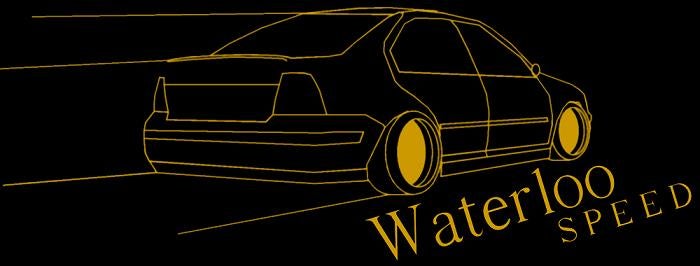
Supervisor: Prof. John McPhee
Background
WaterlooSPEED (Waterloo Software Platform for Express Engine Development) is a team of four Systems Design Engineering undergraduate students at the University of Waterloo who are committed to redesigning the modern car engine control unit (ECU). Our goal is to build an FPGA-based engine control system for a 2002 Volkswagen Jetta 1.8T using a National Instruments CompactRIO embedded system and a LabVIEW development environment. This will serve as a replacement for the vehicle's factory supplied ECU, and will allow for complete adjustability and tuning in order to improve performance and fuel efficiency. Typical automotive research in the academic environment relies heavily upon computer modelling and simulation to prove out new concepts and theories. This platform will allow academic work to be brought to the real world and act as a research platform for experimenting with vehicle hardware changes, engine control algorithms and other cutting edge vehicle technologies.
This project process requires an initial reverse engineering process to determine base fuel and timing maps which need to be carefully planned and executed. The final prototype will be demonstrated at NIWeek 2007 and other such automotive technical symposiums. It showcases both core National Instruments products and products leveraging NI technology as well as the academic abilities of the University of Waterloo.
Project description
The primary objective is to produce an ECU that is able to control the engine under normal conditions. This control only applies to proper function of the engine, and not to other electronic car systems, such as anti-lock brakes, electronic stability, traction and emissions. These systems are primarily communicated via the CANBUS which is beyond the scope of this initial effort. Improvements to the engine's output will remain a focus, but are of secondary importance to a functioning engine control system.
Implementation of performance improvements will depend on the amount of available time and resources, but it is expected that increases in about 15% horsepower and 30% torque, as well as increased fuel efficiency, should be achievable without any other changes in car hardware. Further improvements using the CompactRIO system will be considered and possibly implemented, including but not limited to PDA controlled air suspension, drive-by-wire engine speed control, and selectable turbo boost mode presets.
Design methodology
The first hurdle that needed to be tackled in the project was the method by which the signals from the ECU could be intercepted. For this reason a breakout book was created by the group and installed into the car. This allowed us to tap into the 79 signal lines that enter and leave the current ECU on the prototype car. Each line was controlled by a switch which allows us to choose how the information is being transmitted from the car to the ECU. In one position, the switch allows normal operation of the car and ECU and allows the group to monitor the communication signals. In the secondary position, the ECU is cut-off from the car and the signal information goes through the breakout box into our software controller, which will process the data and send the appropriate return signals.
Another important part of the project is the creation of an engine model for the 4 cylinder turbo-charged internal combustion engine in the car. This is being developed in the LabVIEW environment and by performing research regarding engine modelling and control techniques. This is important as it will allow the group to simulate engine operating conditions to see how our replacement ECU model reacts. This is for piece-of-mind safety considerations and for budget, as we cannot replace the engine in the prototype if problems arise. Various engine control techniques have also been researched and an appropriate one for our group's implementation will be used.
Coupled with the engine model, is the need for an ECU model. This is where the focus of the project will be once all background and peripheral models and hardware have been created and installed. The current ECU in the car was analyzed along with a sample 4-cylinder ECU control model provided by Drivven). The goal is to account for all necessary signals needed to run an engine and create a soft platform ECU that can send and receive the appropriate signals.
Once the above milestones are met testing will be done on the actual car engine and ECU. The group will drive the vehicle and put the breakout box in the first position, which will allow us to view and sample the data. This will be brought into the lab for sorting and analysis. A group of lab tests will also be completed referred to as hardware in the loop. The ECU will be pulled out of the car and will be connected to the compactRIO using debug hardware offered to the group by VW Waterloo. Engine operating conditions will be simulated using the engine model and the ECU behaviour will be observed. This is to give further insight into ECU cause and effect relationships. Finally, once we have filled in the appropriate values to our ECU model, it will be connected to the engine model and the ECU will be tuned to the specifications of our car.
The final step will entail downloading our ECU control software to the compactRIO. This scheme will be implemented using a real time controller interfaced to the FPGA backplane. Once basic engine functionality is achieved, focus will turn to improving performance and fuel economy.